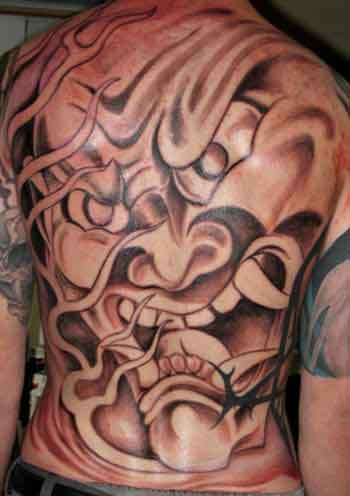Japanese Traditional Tattooing
|
History of Japanese traditional tattooing dates back to centuries. The women of Ainu tribe used to tattoo themselves to look like goddesses so that disease causing demons would get sacred and not attack their village. |
From 300 BC to 300 AD, Japanese traditional tattoos were used for spiritual and social purposes. Such like in other cultures, even in Japan, tattoos were used as indicators of social status. From 300 AD, tattoos in Japan were used to mark criminals. This practice is called bokukei or bokkei. This practiced stopped on in 1870 and people started covering up this mark of shame with more decorative tattoos and this gave further impetus to Japanese traditional tattooing.
Tebori is a Japanese traditional tattooing method which involves using a set of needles attached to the end of a handle made from wood or metal. The tattoo artist dips the needle in ink and creates a design or image by pressing the needles rapidly and rhythmically into the skin. This method is the same as using an electric machine but the difference lies in the capillary action of opening the skin. According to experts, Tebori method does not cause as much damage to the skin as an electric needle.
In Tebori method of tattooing, the masters hold the handle at its far end which makes tattooing much harder. That is why it takes very long for a Tebori apprentice to become a full-fledged Tebori master.
Tebori, the Japanese traditional tattooing method, is still practiced today and many who have had tattoos done through this method claim that the pressure does not hurt as much as an electric tattooing machine.
More Articles :

|
